#forensic history
Text
new hs history teacher(/basketball coach ofc) steve who is being shown around the school by gym teacher chrissy.
she takes him around the building to show him where the teacher's lounge is, the cafeteria, what bathrooms to avoid at all costs, and to where her office is if he ever needs anything.
"If I'm not here, I'm probably in Robbie's class over in the language department."
"Robbie?"
"Robin, my partner. She officially teaches ASL, but she likes to join in on the others' lessons whenever she has downtime."
Finally, once they've covered the whole length of the school, she brings him to his room. "So this is you, and right next door is Eddie, our Criminalistics teacher." gesturing to the still-dark window of the door directly across from his in the alcove.
There's polaroids covering nearly every inch of the outside of the door, pictures of what he can only assume are students with the same dark-haired man.
"Criminalistics?"
"It's a science elective," she explains, "It focuses on the basics of forensic science!"
"Wow that’s…really?"
She nods enthusiastically, "It’s super interesting,” she nods, moving to unlock the empty what-will-be history classroom. “Eddie’s here on even days, and in the music room on odd days for the guitar elective classes."
"Anything I should know about my wall neighbor?" he asks as she pushes the door open.
It looks like she's going to say no, but something flickers across her face and she winces minutely.
"Oh god, what is it?"
She looks at him sheepishly, "How do you feel about metal music?"
--
Since his tour in mid June, Steve's completely overhauled his classroom.
The only room available to him was the one down here in the science hall, but he made do, plastering removable whiteboard contact paper to the tops of the lab tables and a little reminder at each spot for the students about his less-than-stellar hearing, to make sure they speak up when answering a question from the back of the room.
And ever since he got his room, he'd been waiting for the day he finally meets his neighbor.
He met Chrissy's Robbie the same day he had the tour, and they clicked instantly (No seriously, how did he ever function before Robin?). Chrissy had made the comment about them being platonic soulmates one night in August when they'd gone out for one too many drinks, and it's stuck ever since.
Speaking of: "What are you still doing here, dingus? It's almost five."
"Yeah, I know, I know," he says, waving her off.
Robin comes in from the hall and plops herself down on one of the table tops instead of helping him hang a map behind his desk. "You're still adding stuff to your walls?"
"Well, I haven't been here for a couple years already, Bobs," he grits out as he stretches up on his toes to hang the far corner of his map. Finally, the eyelet hooks over the many-times-painted-over hook embedded in the concrete wall. "So yes."
"Well you can finish up tomorrow, we," she emphasizes the word by dramatically waving the same sign with her hand between them, "Have a burger date to get to."
--
The following day, the day before the school year officially starts, Steve arrives early to his classroom, only to find his neighbor's classroom lit up as well.
The be-polaroided door is propped open all the way, the sound of heavy drums and guitar streaming out the door along with the faint smell of moth balls and a spicy incense.
His own room forgotten, Steve steps through Mr. Munson's doorway.
Eddie is standing behind his desk at the front of the room, but hunched over it scribbling onto something.
When Steve's shoe squeaks against the tile floor, Eddie says "Hey, what do you think, identifying skeletal remains, or blood spatter first?" without looking up at him.
"Skeletons, of course." Eddie's head snaps up to look at him. His huge dark eyes are much more striking in person than in a photo. "Much more interesting, yeah?"
Eddie blinks at him. "You're not Chrissy."
"You're correct."
Eddie blinks again, "Who're you?"
"Oh, sorry, hi. I'm Steve. I'm your new neighbor." he gives the other man an awkward wave when he still doesn't move. "Sorry, should I--" he says, gesturing over his shoulder with a thumb.
"No!" Eddie interrupts, standing straight and hurrying out from around his desk.
He extends a hand and jogs lightly up to Steve. His pen is still laced into his fingers, the end of it chewed flat. "Oh shit, sorry, sorry," he tucks the pen behind his ear, "I'm Eddie. Munson."
"I know," Steve smirks, taking Eddie's hand. "I've been waiting to meet you."
"Oh have you?" he smirks.
"Yeah, Chrissy told me you're her best friend and I wanted your advice on maybe asking her out."
Eddie's face hardens immediately, the warm milk chocolate of his eyes curing into a solid dark, the easy smirk morphing into a cringe as he looks Steve up and down.
He opens his mouth to say something particularly scathing, Steve's sure, but he cuts him off before he can. "I'm kidding, man, I know she's with Robin."
His expression softens just a bit.
"Plus, she's not really my type anyway, even if I were hers."
"Oh?"
"Yeah, I'm more into brunettes." Steve winks, finally releasing Eddie's hand. "I still have a bit more to get done, but I'll check in with you later?"
"Oh--yeah, for sure, I'll be here." Eddie stammers out, his cheeks tinged pink.
Steve fist pumps in his head as he heads to his door, You still got it, Harrington.
#this is definitely 100% based on my own high school criminalistics class and classroom location lmao#sorry mr. kammers#your chemistry classroom is now steve's for plot reasons#no but really#criminalistics class is real and was my fave class of all the ones i took in hs#also based on my hs having asl as a three-year second language option#that i took all three years i could ofc#teacher au#a drabble in which steve is a little shit#steddie#history teacher!steve#forensics teacher!eddie#teacher!steve#teacher!eddie#teacher!robin#teacher!chrissy#buckingham#steve harrington#eddie munson#robin buckley#chrissy cunningham#st#steddie drabble#stranger things#noelle writes
358 notes
·
View notes
Text
Forensic Odontology Overview

Forensic odontology is a subspecialty of dentistry that has its main focus on the identification of deceased victims. In simplest terms, there are two aims in forensic dentistry. The first one is the identification of the dead, and second is the identification of an assailant who has used his or her teeth as a weapon. But how? Let's see.
Let's start with corpse identification. Teeth can be used to identify corpses, as no two oral cavities are alike, and teeth are unique to an individual. The dental evidence of the deceased recovered from the crime scene is compared with ante-mortem records for identification. This is used in cases such as mass casualties, burn victims, or severely disfigured/decomposed corpses.
Forensic odontology can also be used to determine things like age, race, and sex. In cases where there is no blood or other DNA sources, teeth can also be used.
Age is determined by looking at X-rays of the permanent teeth and tooth roots within the bone. The crown of a tooth forms first, followed by the root, and scientists estimate age by comparing the stage of tooth formation in the X-rays and bone with known dental growth standards.
Race is found by comparing the shapes of the different teeth. Determining race using teeth isn't easy, but using common dental characteristics as indicators (like Caucasoids usually having narrow “v-” shaped arch giving rise to crowding of teeth) we can get a good guess.
To determine sex, we rely on sexual dimorphism. Generally, male teeth have significantly greater quantities of dentine than females, while female teeth are found to have greater enamel thickness than male teeth. This isn't always fully accurate, but when combined with other factors, it helps give an idea.
None of these are perfect, but they can help give us a good approximate description, which is better than none.
Now, Bite Mark analysis.

There's 4 steps to bite mark analysis. Photographs, saliva swabbing, impressions, and tissue samples.
In order to make a good comparison, a balanced, color, scale photograph should be made of the defendant’s teeth (which can be used for testimony in court) and of the victim’s bite. Because the dental expert will need to know the scale shown in the picture, some method of measurement (such as a ruler or tape measure) photographed alongside the bite mark and the defendant’s teeth is necessary. A plaster cast of the defendant’s dental impressions can also be used to prepare a plastic overlay. The plastic overlay is used to mark the points of contact and forms a representation of defendant’s bite marks or a pattern of the cutting edges of defendant’s teeth. This representation can then be compared with a scaled photograph of the bite mark on the victim as a means of determining common points of identification.
If the bite area was swabbed and saliva recovered, and it was a positive match to the subject, that could help identify the assailant, but it's not often that DNA can be recovered.
Bite analysis has its issues, as tooth marks are not always transfered accurately, and sometimes there's not enough difference in bite marks to tell reliably. Bitemark analysis is more often used for excluding someone as a potential assailant. Say the mark shows imprint of fully intact frontal incisors, and the proposed biter does not have all their front teeth. This means that the person being accused is not the probable assailant. This could also be used to tell if the bite was self-inflicted. But bite mark analysis is often not admissible due to it having been found to be unreliable in some cases. People have been rightly and falsely convicted because of it, and it can be an unreliable method for forensic examination.
As with all areas of forensics, it's under dispute for its reputability. Bite mark analysists have been shown to be unable to consistently agree on whether the bitemark was even human. Even minor distortions could lead to the mark matching a number of people.
And here's a little bit of interesting history I came across in my travels :)
There are many "first" uses of forensic odontology in history across the web, but as far as I can find the first documented use of teeth for identification began during 66 AD, with the Agrippina and Lollia Pauline case. (There's a bit to it, find it here.)
Recorded forensic identification in India started in 1193, where Jai Chand, a great Indian monarchy, was destroyed by Muhammad's army, and Jai Chand, Raja of Kanauji was murdered and he was identified by his false teeth.
Dr Ascor Amoedo is reputed as the father of forensic odontology and documented the first case of dental identification in which many individuals lost their lives in a disaster. 126 people were charred to death due to a fire accident in Paris 1897, and were identified using their teeth.
In 1979, a double bite mark played an important role in convicting Ted Bundy of murder as he'd bitten one of his last victims.
#forensics#forensic science#forensic ondontology#dentists#dentistry#sherlock#deductions#science#mortuary science#dexter#criminology#criminals#criminal minds#criminal#criminals minds#woo science#police#idk im kinda using everything#orthodontics#orthodontics near me#AHHAHA#why is that a tag#forensic odontology#odontology#teeth#tma#spencer reid#help im so tired#did this make sense someone tell me it does#history
83 notes
·
View notes
Text
Stiles: Sometimes I watch gangbangs. You know, the ones that have one woman and an entire room of men.
Stiles: Not to jerk off or anything. I just like watching the line of guys in the back and trying to imagine what they're talking about to each other as they awkwardly stand around, waiting for their turn.
Stiles: Like, can you imagine two guys, that only just met that morning, desperately trying to stay hard as they make small talk about how congested L.A. traffic has gotten recently while they wait for the eight guys in front of them to finish up?
Stiles: Meanwhile, the girl is having the time of her life delegating which guy gets to fuck which hole and for how long, like a queen sprinkling gold coins off her balcony at the peasants.
Stiles: Anyway, that concludes my report on "Powerful Women In History".
[Later]
Derek:
Derek: I can't believe they gave you a 75 for that.
Stiles: Eh. It was extra credit anyway.
#sterek#teen wolf#derek hale#stiles stilinski#mieczysław stiles stilinski#tyler hoechlin#dylan o'brien#incorrect quotes#incorrect teen wolf quotes#incorrect teen wolf#He did this for a Forensic Anthropology course#Proving that the time he wrote the history of circumcision on his econ test was not an isolated incident#I feel like Stiles has such fantastic grades that he just gets bored and does crazy shit like this when he knows he can afford to
832 notes
·
View notes
Photo
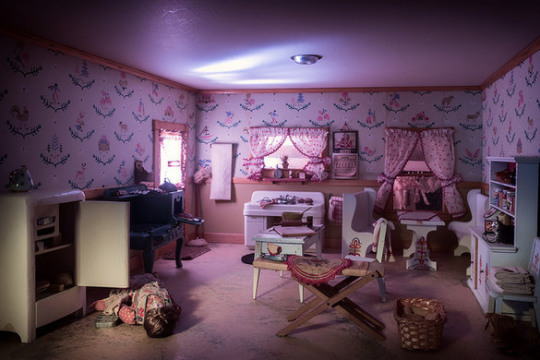
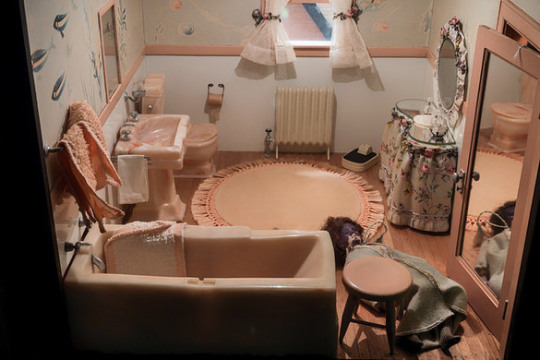
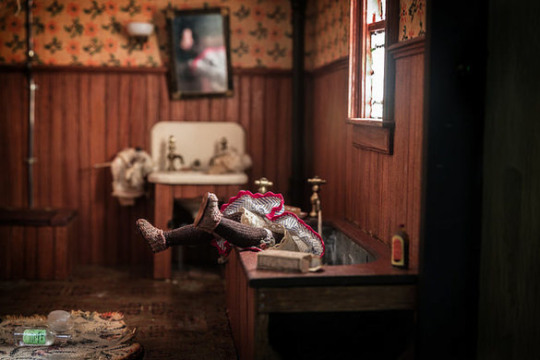
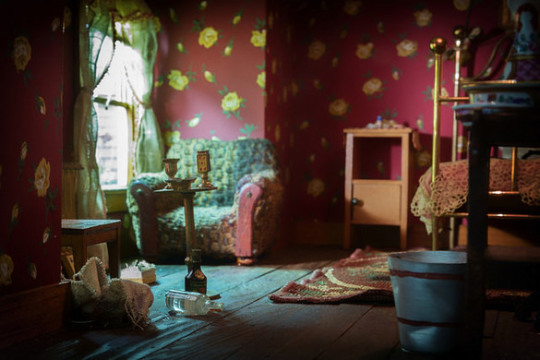
Upon first glance, one might mistake the Nutshell Studies of Unexplained Death for an innocent child's plaything. However, a closer inspection reveals something far more sinister. These intricate dollhouses, created by Frances Glessner Lee, depict anything but happy families.
The series consists of eighteen dollhouses, each designed to aid in the solving of unsolved murders at a time when forensic science was virtually non-existent. Frances would attend crime scenes and autopsies to create accurate and detailed miniature crime scenes, complete with blood spatter, furniture placement, and other subtle clues that could be used to solve the crimes.
334 notes
·
View notes
Text
thanks to the sort of gossipy history i tend to read i know entirely too much about the grounds on which i could get out of the unhappy medieval european marriage that i am not and never will be part of.
#just found out that pre-1215 there were more degrees of consangunity than there are of kevin bacon! :O#1215 must have been WILD - magna carta AND endless discourse over whether your liege lord's current marriage is still incestuous!#tho tbh am tempted by just murdering my shitty husband it's not like they have forensics in those days they'd never prove anything#it MIGHT have been a genuine hunting accident this time. who's to say really? WHO BUT THE LORD DOEST KNOWETH???#(no i don't know how to correctly conjugate the verbs in Ye Olden. if that bothers u then GETTETH THEE UNTO FUCK)#btw u notice modern observers do NOT just un-count those marriages that get annulled on whatever grounds?#like nobody ACTUALLY thinks both tudor queens were illegitimate do they?#and eleanor of aquitaine def gets to have been married to two kings right?#this is another way in which history has said “fuck you” to henry 8th which obviously i am all in favour of (because fuck him)
12 notes
·
View notes
Text
Imagine stumbling upon a well-preserved body in a bog! That's what happened last October when police were alerted to human bones in Northern Ireland's peatland. Now, detectives, forensic experts, and anthropologists have joined forces to unravel the truth behind this naturally preserved corpse from over 2,000 years ago, at the intriguing intersection of crime investigation and archaeology!
Employing the highest standards in forensic recovery of human remains, experts meticulously interpreted the findings of the Irish Bog body found among fossilized trees in Northern Ireland.
Adding to the mystery of this eerie discovery, archaeologists are actively exploring potential links between bog bodies and ancient rituals. Could this body be connected to ancient royal sacrifices?
#Bog Bodies#bog#human remains#DNA#forensics#Ireland#Irish#radio carbon dating#ancient#history#ancient origins
14 notes
·
View notes
Text
The third process of decomposition is adipocere, a rare chemical change in the body’s saturated fat, which hydrolyses it, stiffening and swelling it into a waxy compound, a bit like soap. It is sometimes called ‘corpse wax’ or ‘the wax of graveyards’. Basically, the body, or part of it, is preserved, looking as though it is a waxwork.
In the UK, the process of adipocere formation takes about six months – although I have heard of a case just three weeks after death that presumably was aided by the sun’s heat and the warmth of maggot infestation.
Adipocere requires damp conditions. In its early stages, when the fat is hydrolysed into a greasy semi-fluid, the rancid smell is terrible. But, as the process progresses, the fat becomes brittle and paler and when the adipocere is fully formed it is grey and firm.
The phenomenon of adipocere has been documented for many years and it can last literally centuries. Otzi, the Neolithic hunter known as the ‘Glacier Man’, whose body is on display in Bolzano in the Italian Dolomites, was probably at least partly preserved this way. In the eighteenth century, excavations at the Cimetière des Innocents in Paris allegedly yielded tonnes of adipocere, and it was promptly put to use by the city’s soap- and candle-makers. There were some famous cases in the 1970s from Australia where the process perfectly preserved the form if not the contents of divers’ bodies found about a year after they drowned due to equipment failure as they explored a deep freshwater lake.
On occasions, adipocere has revealed a cause of death, perfectly reproducing injuries like bullet holes or preserving the fat in certain organs. In general, it is more commonly found in women, the well-nourished and the obese, but conditions have to be right – usually the body must have been submerged in water anaerobically or buried in a damp grave, especially if there is no coffin and especially if the deceased is wearing natural and not synthetic fibres. Its formation can be influenced by the season, the depth of the grave, coffin composition, the soil and the local insect activity.
Unnatural Causes: The Life and Many Deaths of Britain’s Top Forensic Pathologist Unnatural Causes (Dr. Richard Shepherd)
#Unnatural Causes: The Life and Many Deaths of Britain's Top Forensic Pathologist#Unnatural Causes#UC Chapter 11#Dr. Richard Shepherd#forensics#pathology#decomposition#adipocere#writing reference#history#V#books#quotes
15 notes
·
View notes
Text
everyday i wish i could skip bioarchaeology i just really don’t care. 😭
#there is a reason i don’t touch bioanth or forensics.#this class is just forensics lite. except more history based.
4 notes
·
View notes
Text
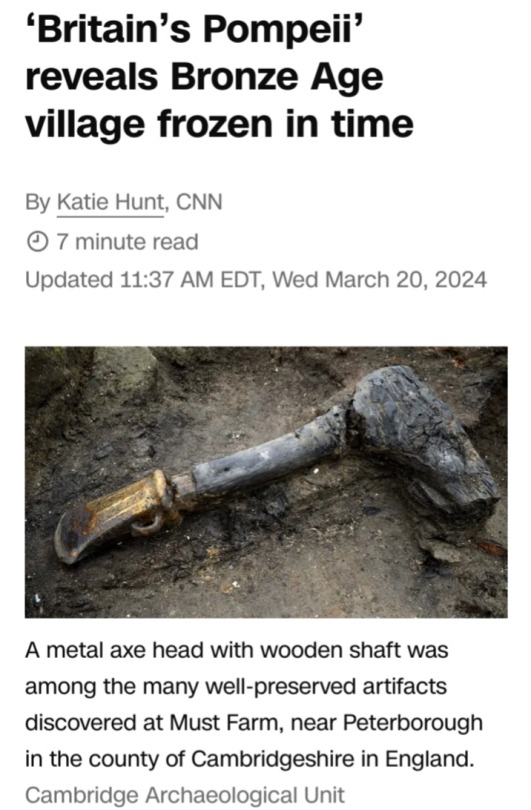
(CNN) — It’s late summer 2,850 years ago. A fire engulfs a stilt village perched above a boggy, slow-moving river that weaves though the wetlands of eastern England.
The tightly packed roundhouses, built from wood, straw, turf, and clay just nine months earlier, go up in flames.
The inhabitants flee, leaving behind all their belongings, including a wooden spoon in a bowl of half-eaten porridge.
There is no time to rescue the fattened lambs, which are trapped and burnt alive.
The scene is a vivid and poignant snapshot, captured by archaeologists, of a once thriving community in late Bronze Age Britain known as Must Farm, near what’s now the town of Peterborough.
The research team published a two-volume monograph on Wednesday that describes their painstaking $1.4 million (£1.1 million) excavation and analysis of the site in the county of Cambridgeshire.
Described by the experts involved as an “archaeological nirvana,” the site is the only one in Britain that lives up to the “Pompeii premise,” they say, referencing the city forever frozen in time by the eruption of Mount Vesuvius in AD 79 that has yielded unparalleled information about ancient Rome.
“In a typical Bronze Age site, if you’ve got a house, you’ve probably got maybe a dozen post holes in the ground and they’re just dark shadows of where it once stood.
If you’re really lucky, you’ll get a couple of shards of pottery, maybe a pit with a bunch of animal bones.
This was the complete opposite of that process. It was just incredible,” said Chris Wakefield of the Cambridge Archaeological Unit at the University of Cambridge, an archaeologist and member of the 55-person team that excavated the site in 2016.
"All the axe marks had been used to shape and sculpt the wood. All of those looked fresh, like they could have been done last week by someone,” Wakefield added.
The remarkably preserved condition of the site and its contents enabled the archaeological team to draw comprehensive new insights into Bronze Age society — findings that could overturn the current understanding of what everyday life was like in Britain during the ninth century BC.

Must Farm domesticity — and a mystery
The site, which dates to eight centuries before Romans arrived in Britain, revealed four roundhouses and a square entranceway structure, which stood approximately 6.5 feet (2 meters) above the riverbed and were surrounded by a 6.5-foot (2-meter) fence of sharpened posts.
The archaeologists believe the settlement was likely twice as big. However, quarrying in the 20th century destroyed any other remains.
Though charred from the fire, the remaining buildings and their contents were extremely well preserved by the oxygen-starved conditions of the fens, or wetlands, and included many wooden and textile items that rarely survive in the archaeological record.
Together, traces of the settlement paint a picture of cozy domesticity and relative plenty.
The researchers unearthed 128 ceramic artifacts — jars, bowls, cups and cookware — and were able to deduce that 64 pots were in use at the time of fire.
The team found some stored pots neatly nested.
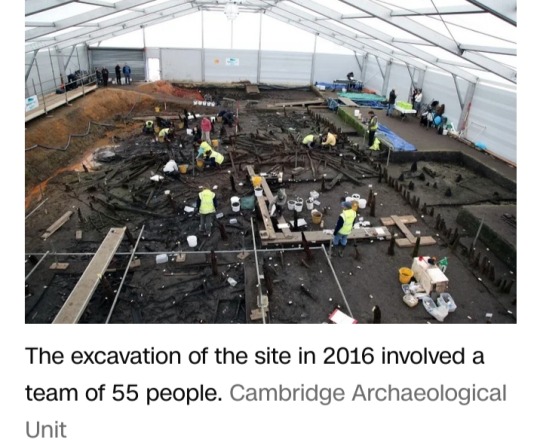
Textiles found at the site made from flax linen had a soft, velvety feel with neat seams and hems, although it wasn’t possible to identify individual pieces of clothing.
Wooden artifacts included boxes and bowls carved from willow, alder and maple, 40 bobbins, many with threads still attached, various tools, and 15 wooden buckets.
“One of those buckets … on the bottom of it were loads and loads of cut marks, so we know that people living in that Bronze Age kitchen when they needed an impromptu chopping board, were just flipping that bucket upside down and using that as a chopping surface,” Wakefield said.
“It’s those little moments that build together to give a richer, fuller picture of what was going on.”

The circumstances of the event that brought it all to a halt are still a bit of a mystery.
The researchers believe the fire took place in late summer or early autumn because skeletal remains of the lambs kept by one household showed the animals, typically born in spring, were three months to six months old.
However, what exactly caused the devastating fire remains unclear. The blaze could have been accidental or deliberately started.
The researchers uncovered a stack of spears with shafts over 10 feet (3 meters) long at the site, and many experts think that warfare was common in the time period.
The team worked with a forensic fire investigator but ultimately couldn’t identify a specific “smoking gun” clue pointing to the cause.
“An archaeological site is a lot like a jigsaw puzzle. At a typical site you have 10 or 20 pieces out of 500,” Wakefield said.
“Here, we had 250 or 300 pieces and we still couldn’t get the complete picture on how this big fire broke out.”
Mike Parker Pearson, a professor of British later prehistory at the Institute of Archaeology at University College London, described both the report and the site “as exceptional.” He wasn’t involved in the research.
“The fire may have been disastrous for the inhabitants but it is a blessing for archaeologists, a unique snapshot of life in the Bronze Age,” he said via email.
Upending ideas about Bronze Age society
The contents across the four preserved houses were “remarkably consistent."
Each one had a tool kit that included sickles, axes, gouges, and handheld razors used to cut hair or cloth.
With almost 538 square feet (50 square meters) of floor space in the largest, each of the dwellings appeared to have distinct activity zones comparable to rooms in a modern home.
“By plotting the positions of all these finds — pots, loomweights, tools, and even sheep droppings, the archaeological team have reconstructed the houses’ internal use of space,” Parker Pearson noted.
“The kitchen area was in the east, the storage and weaving area in the south and southeast with the penning area for lambs, and the sleeping area in the northwest, though we don’t know where the doorway was for each house.”
Not all the items were of practical use, such as 49 glass beads plus others made of amber.
Archaeologists also unearthed a woman’s skull, smooth from touch, possibly a keepsake of a lost loved one.
Some of the items the researchers found will go on display starting April 27 in an exhibition titled “Introducing Must Farm: A Bronze Age Settlement” at the Peterborough Museum and Art Gallery.
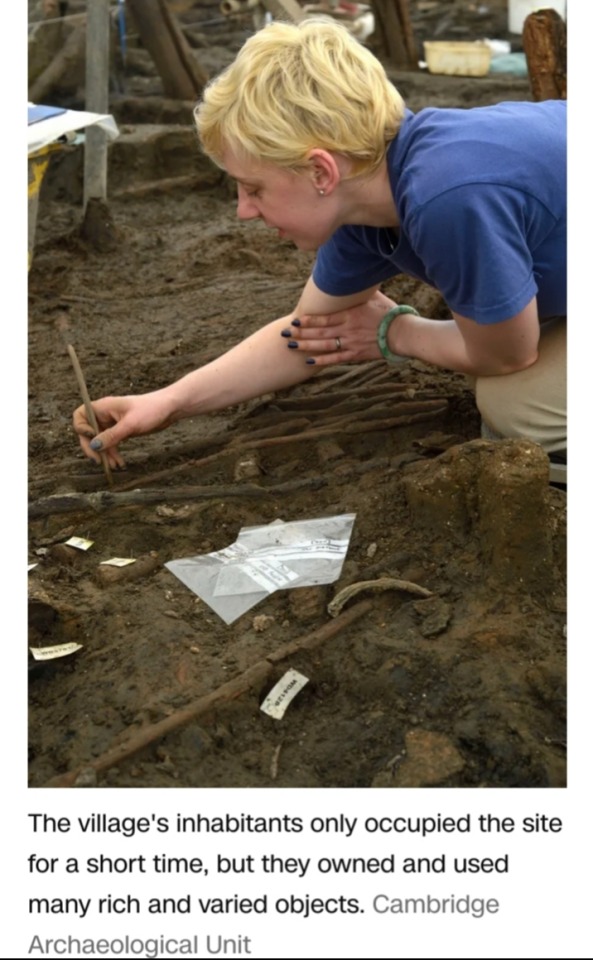
Lab analysis of biological remains revealed the types of food the community once consumed.
A pottery bowl imprinted with the finger marks of its maker held a final meal — a wheat grain porridge mixed with animal fat.
Chemical analyses of the bowls and jars showed traces of honey along with deer, suggesting the people who used the dishes might have enjoyed honey-glazed venison.
Ancient excrement found in waste piles below where the houses would have stood showed that the community kept dogs that fed on scraps from their owners’ meals.
And human fossilized poop, or coprolites, showed that at least some inhabitants suffered from intestinal worms.
The waste piles, or middens, were one line of evidence that showed how long the site was occupied, with a thin layer of refuse suggesting the settlement was built nine months to a year before it went up in flames.
"Two other factors supported that line of reasoning," Wakefield said.
“The second was that a lot of the wood that was used in the construction was unseasoned, it was still effectively green, it hadn’t been long in position,” he said.
“The third one is that we have a lack of the kind of insects and animals that are associated with human habitation."
"It wouldn’t be long before beetles would worm (in) … but there’s no evidence of any of that in any of the 18,000 plus timbers.”
The fact that the site, with its rich and varied contents, was in use for only a year upended the team’s preconceived “visions of everyday life” in the ninth century BC.
It may suggest that Bronze Age societies were perhaps less hierarchical than traditionally thought, according to the 1,608-page report.
“We are seeing here not the accumulation of a lifetime, but just a year’s worth of materials,” the authors noted in the report.
“It suggests that artefacts such as bronze tools and glass beads were more common than we often imagine and that their availability may not in fact have been restricted.”
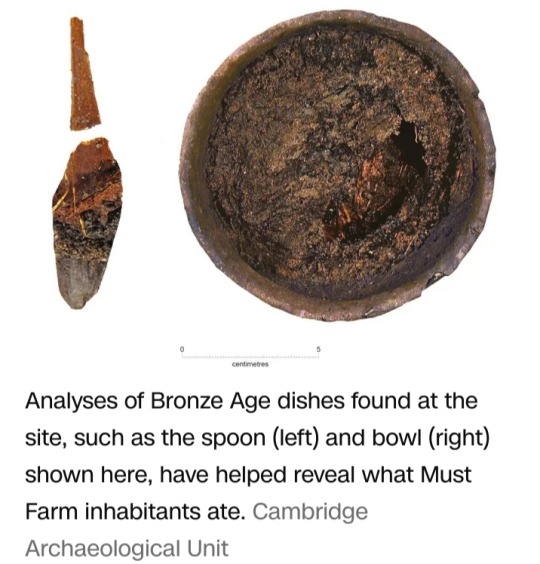
#Must Farm#Late Bronze Age#Late Bronze Age Britain#Cambridgeshire#Peterborough#archaeological nirvana#Pompeii premise#Mount Vesuvius#AD 79#Bronze Age#Chris Wakefield#Cambridge Archaeological Unit#University of Cambridge#9th century BC#Britain's Pompeii#archaeology#archaeologists#ceramic artifacts#wooden artifacts#forensic fire investigator#archaeological site#Institute of Archaeology#University College London#Peterborough Museum and Art Gallery#artefacts#Mike Parker Pearson#history
4 notes
·
View notes
Text
Sometimes I wonder if there is something wrong with my brain because I cannot wrap my head around like math and science things. I am taking a class on digital curation and my brain just kind of looks at the words about coding and the articles we read and im just like uuhhhhhh
what dis?
How dis work?
What are these words?
I dont know if I just have issues concentrating or processing things like that or what
when it comes to history and arts im fine but when its like that type of science and especially math my brain is just
white noise @.@
#i definitely am more of a right brain person but still i feel like it shouldnt be this hard to process stuff like this#i was never a math kid like ever#science was okayish but i mostly thrived in like history arts and English so idk#also just how people write research papers involving science im just like wtf am i reading right now#though when it comes to forensics and bones i understand for the most part but oof#computer stuff is very hard for my brain to comprehend#rambles#work talk#digital curation#library#left brain vs right brain
2 notes
·
View notes
Text
I have been cursed, a terrible horrible awful curse that I can’t get rid of! Every few weeks, like fucking clockwork, HE shows back up in my life WITHOUT SO MUCH AS A WARNING!
He has no right to appear like that, he doesn’t belong in my life, I shouldn’t even be giving him any thought, but he haunts me.
Who?
Franz fucking Kafka
#franz kafka#the metamorphosis#cursed#im dead serious#like? Why the fuck is he on my Pinterest feed#His fucking quotes and diary entries#He even showed up in my history research#I was researching forensics!#Fuck Franz Kafka#He and his daddy issues can leave me the fuck alone
17 notes
·
View notes
Text
Frances Gertrude McGill

Frances Gertrude McGill, known as "the Sherlock Holmes of Saskatchewan", was born in Minnedosa, Manitoba in 1882. McGill was a pioneer in the field of forensic pathology. In 1923, she began working with the Royal Canadian Mounted Police to investigate suspicious deaths. In 1937, she helped establish the RCMP's first forensic laboratory, where she later served as director.
Frances Gertrude McGill died in 1959 at the age of 76.
37 notes
·
View notes
Text
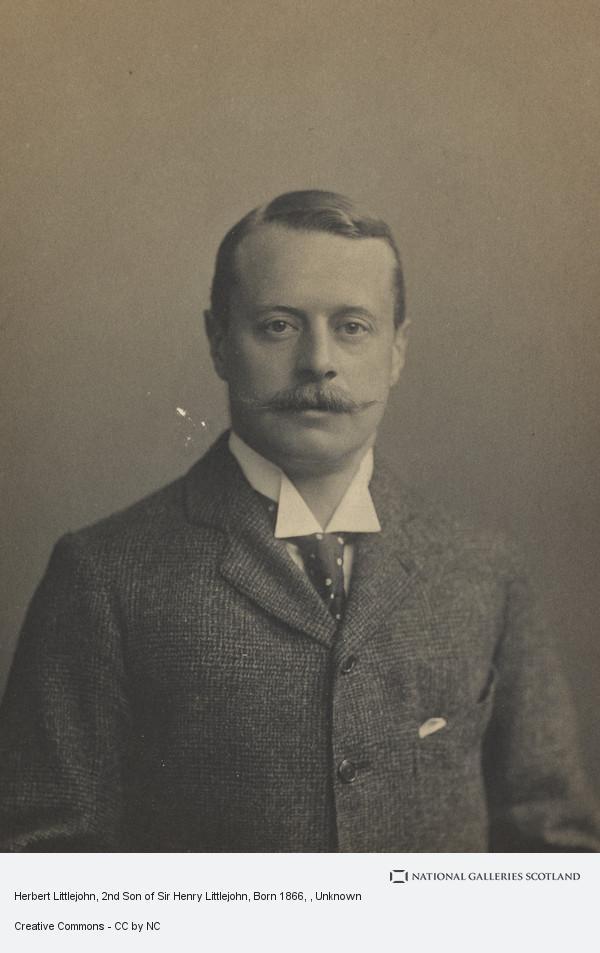
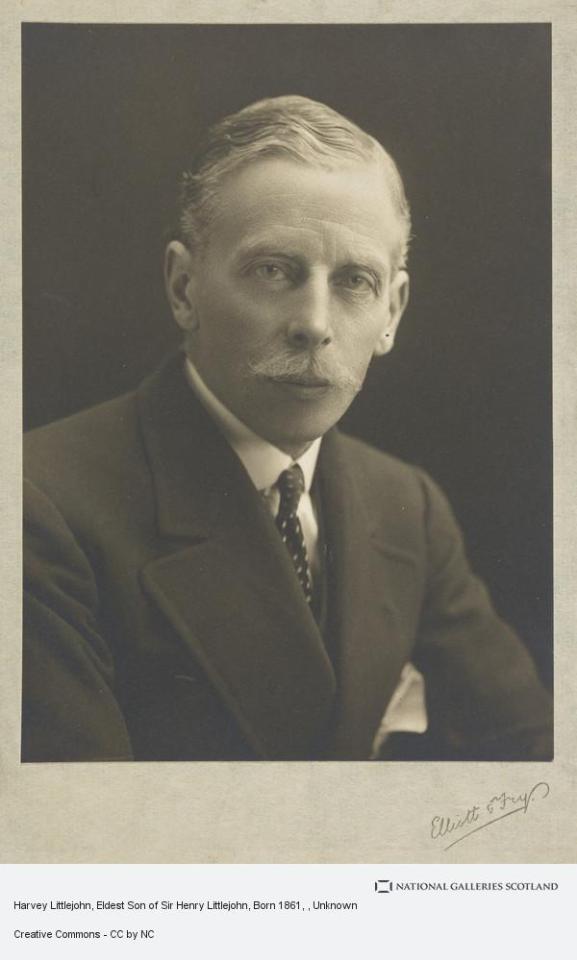
Henry Duncan Littlejohn was born in Edinburgh on May 8th 1826, Littlejohn is one of two Edinburgh men that are quoted as being an influence in Arthur Conan Doyle’s formation of the character Sherlock Homes.
Henry was educated in Perth before The Royal High school and the Edinburgh University studying medicine and graduating with distinction in 1847.
It’s quite a topical post given that Henry Littlejohn, whose appointment as the first Medical Officer of Health for Edinburgh was the first appointment of its kind in Scotland. He pioneered compulsory notification of infectious disease in Edinburgh leading to the introduction of such notification throughoutt Britain. The resultant mapping of diseases allowed active prevention and led to significant reduction in mortality during the 50 years of his office. He also achieved distinction in Forensic Medicine as an expert Crown witness for most of the major Scottish trials in the latter half of the 19th century.
Eloquent and erudite, he was regarded as an outstanding teacher amidst Edinburgh contemporaries who included some of the greatest medical teachers in the world.
In 1879 due to his influence a clause was included in the local Police Act requiring such notification giving Edinburgh the lead to the whole of Great Britain. This was to prove one of the major advances in public health of the 19th century. His “Report on the Sanitary Condition of the City of Edinburgh” proved a blueprint for social reform. It clearly demonstrated the effect of population density on the spread of disease and mortality. He was able to define the incidence of dip patients throughout the city and demonstrated a clear correlation between deprivation, disease and mortality. His proposals to improve this included recommendations about building, sewage, water pollution and limiting overcrowding. The Town Council were responsive to his recommendations and demolished many aging properties which had become dangers to health.
By the time of his retiral in 1908, after 46 years of service, mortality rates in Edinburgh from infectious disease had halved. Largely as a result of his efforts cholera and typhus had disappeared and smallpox had become a rarity.
The other inspiration I mentioned earlier, for Sherlock Holmes gets a mention here in this article about both him and Liltlejohn
#scotland#scottish#surgeon#forensic scientist#scientist#scientist.#edinburgh#history#sherlock holmes
10 notes
·
View notes
Text
Watch how the face of this lady of the Peruvian Moche nobility was brought back to life.
31 notes
·
View notes
Text
A much more unusual form of decomposition in this country [UK] is mummification. Mummified bodies are brown and dry. The skin is drawn tightly over the skeleton so it looks shrivelled and tough like leather. This process dries the tissues, hardening them in a way that prevents putrefaction. It usually requires hot, desert-like conditions: bodies buried in the sands of Egypt may even mummify spontaneously.
In the UK, mummification can happen if a thin person (the thin are more likely to cool and desiccate quickly) dies in a very dry and draughty place – an attic or chimney, for instance. It is rare to find a mummified body now but not so long ago they were encountered relatively often.
‘Anyone here seen a mummified body outside the British Museum?’ I asked my audience. A few raised their hands.
One of the older officers said, ‘Baby. Been hidden in the attic. And not yesterday, either. Years and years ago, probably during the war they said, because it happened a lot then.’
‘Was it a newborn?’ I asked.
He nodded. I had actually recently seen a mummified newborn myself, and the circumstances had been the same. The bodies of newborn babies are relatively sterile, which makes them less susceptible to putrefaction and more likely to mummify. Those babies were generally born in secret to single mothers in the days when this was truly shameful. Either they were born dead, or they died at birth as the mother struggled to cope alone, or they were actually killed but, in many cases, burial was apparently not an option and so the body would be hidden under the floorboards or in the attic. As social attitudes to birth outside marriage changed, these discoveries decreased, but in the 1980s they still sometimes happened when old ladies died and young couples bought their houses for renovation – to find, in the loft, the tragic, long-hidden, mummified corpse of a tiny baby.
There are a few examples of adult homicides revealed years later by the discovery of a mummified body. Most famous is a case in Wales where a strangled woman was hidden in a cupboard for years while her family continued to claim her pension. Once completely dried, a mummified body can last a long time. But eventually mould forms and the dried tissues gradually become powdery and disintegrate. The mummy very often attracts rodents, beetles and moths, too. However, if it is recovered in time it can very faithfully reveal through preserved bruises, abrasions or other injuries, the cause of death.
Unnatural Causes: The Life and Many Deaths of Britain’s Top Forensic Pathologist Unnatural Causes (Dr. Richard Shepherd)
#Unnatural Causes: The Life and Many Deaths of Britain's Top Forensic Pathologist#Unnatural Causes#UC Chapter 11#Dr. Richard Shepherd#forensics#pathology#decomposition#mummification#writing reference#history#V#books#quotes
7 notes
·
View notes